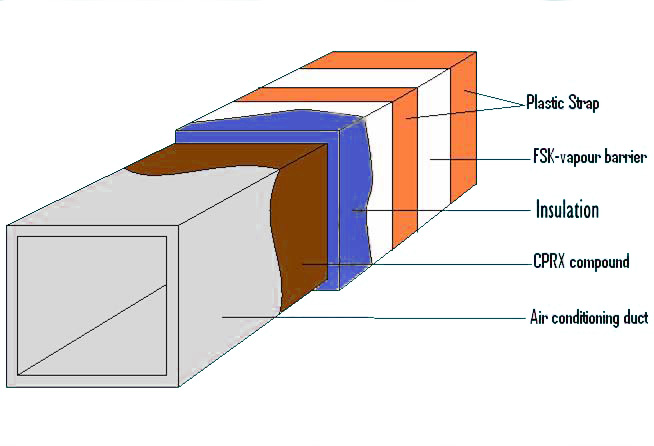Air is transported through ducts at a temperature different than that of the surroundings. Insulation reduces the rate of thermal loss to those surroundings. Without insulation, the air would need extra heating or cooling in order to arrive at the design supply air temperature. Insulation prevents condensation and dripping from ducts. Un-insulated cold air ducts very often have surface temperatures below the local dew point. At this temperature, condensate will form and eventually drip off, causing an uncontrolled accumulation of moisture on the outside surface of the duct. Duct insulation eliminates the formation of condensate and consequently prevents rusting and staining.
Return air ducts also need to be insulated if they pass through environments that adversely affect the return air temperature . Exhaust air ducts normally do not need insulation.
Insulation should be wrapped around the duct's exterior. A protective cover with a vapor barrier such as an aluminum foil, referred to as FSK, should be included in insulation specifications.
Insulation can also be lined from inside of the duct .However interior duct insulation (lining) should not be used in laboratory or cleanroom applications because the insulation tends to entrain microscopic particles into the airflow.
Suggested Material for Duct Thermal Insulation:
- Fiberglass wool.
- Elastomeric Nitrile Rubber Foam.
- Crosslinked Polyethylene Foam.
- Non crosslinked Expanded Polyethyene Foam.
